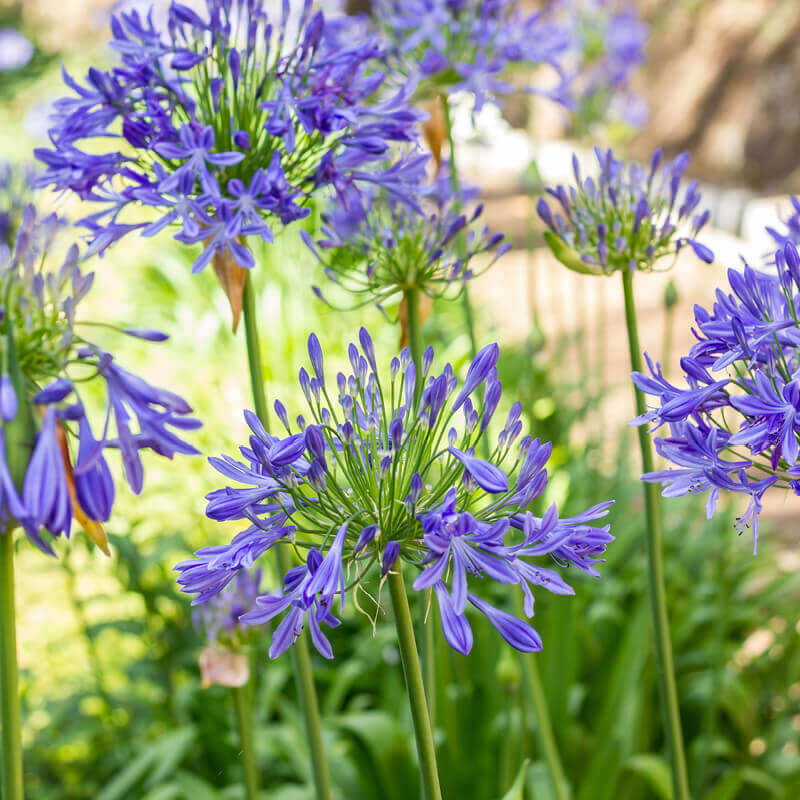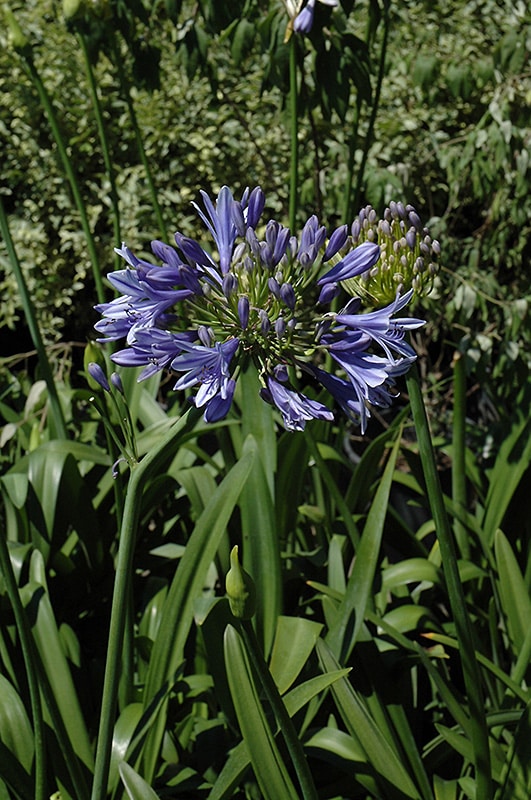Spectacular Agapanthus: Enhancing Your Yard's Beauty
Spectacular Agapanthus: Enhancing Your Yard's Beauty
Blog Article
Unleashing the Secret to Successful Agapanthus Farming: Tips and Tricks for a Flourishing Yard
In the realm of gardening, growing agapanthus effectively needs a calculated technique that encompasses numerous elements of plant treatment. By recognizing the nuances of agapanthus growing, one can create a setting where these plants prosper and grow abundantly.
Growing Agapanthus: Best Practices
When planting Agapanthus, appropriate soil preparation is crucial for ensuring effective growth and development of these beautiful flowers. Agapanthus, frequently referred to as Lily of the Nile or African lily, grows in well-draining dirt with a slightly acidic to neutral pH degree - Agapanthus. Prior to growing, it is vital to amend hefty clay soils with natural issue such as compost or peat moss to improve water drainage and supply important nutrients for the plants
To plant Agapanthus, select a place that gets complete sunlight to partial shade, as this will certainly advertise healthy development and bountiful flowering. Dig an opening twice the diameter of the plant's origin round and position the Agapanthus at the very same deepness it was formerly growing. Carefully backfill the hole with dirt, pressing down securely to remove any kind of air pockets around the origins.
Water the recently grown Agapanthus completely and continue to keep the soil equally damp, specifically during the plant's active growing period. Agapanthus. Applying a well balanced fertilizer once a month can additionally support the plant's development and blooming. By adhering to these best practices for planting Agapanthus, you can produce a stunning display of these captivating flowers in your yard
Perfect Dirt Conditions for Agapanthus
For ideal growth and blooming success of Agapanthus plants, guaranteeing the soil problems are optimal is critical. Agapanthus chooses soil that is rich in nutrients, so including a well balanced plant food throughout the growing season can advertise healthy and balanced development and dynamic flowers.

Watering and Feeding Tips
To make sure healthy and balanced growth and dynamic flowers, correct watering and fertilizing methods are crucial for successful Agapanthus cultivation. Agapanthus plants take advantage of regular watering, specifically during the expanding season. It is advised to water deeply once a week, making certain the dirt is moist however not waterlogged. During warm climate or in pots, more frequent watering may be necessary to avoid the dirt from drying out totally.
When it involves feeding Agapanthus, a well balanced fertilizer with equal components nitrogen, phosphorus, and potassium can be applied in the spring to advertise healthy and balanced growth and blooming. Slow-release plant foods are suitable for supplying nutrients progressively over a prolonged duration. Avoid over-fertilizing, as this can bring about extreme vegetation growth at the expense of flowers.
In addition, including raw material like garden compost into the soil can improve nutrient levels and boost dirt structure, aiding in the general health of the Agapanthus plants. By complying with these watering and feeding pointers, garden enthusiasts can ensure their Agapanthus plants thrive and produce spectacular display screens of blossoms.
Pruning and Deadheading Techniques
Correct pruning and deadheading strategies play a crucial duty in preserving the health and wellness and looks of Agapanthus plants, matching the necessary practices of watering and feeding for effective cultivation. Trimming Agapanthus includes removing invested flower heads, yellowing or dead leaves, and overall shaping of the plant to promote much better growth. Deadheading, the process of eliminating faded blossoms, not only enhances the plant's appearance yet likewise motivates further blooming.
When deadheading Agapanthus, it is advisable to clip off the blossom stem at the base utilizing sharp, tidy shears. This process reroutes the plant's energy from seed manufacturing back into root and foliage development, promoting a healthier and more durable plant. Normal deadheading can prolong the blooming duration of Agapanthus and stop self-seeding, which can cause overcrowding.
In regards to trimming, Agapanthus generally take advantage of a light trim after flowering to clean Discover More up the plant and motivate fresh growth. Cutting down the invested flower stems and getting rid of any kind of broken or dead foliage assists maintain the plant's vigor and total appearance. Nevertheless, it is necessary to prevent reducing into the crown of the plant, as this can damage its health and wellness.

Protecting Agapanthus From Vermins and Diseases
Executing efficient bug and condition administration that site strategies is vital to safeguarding the wellness and vitality of Agapanthus plants in growing. Agapanthus are usually hardy plants, yet they can still drop target to numerous parasites and diseases otherwise effectively looked after. One typical bug that influences Agapanthus is the Agapanthus borer, a caterpillar that passages right into the plant, causing damage to the blossoms and leaves. To avoid infestations, routine assessment of the plants is important. If borers are discovered, they can be by hand eliminated, or insecticidal soap can be utilized as a control measure.
Along with pests, Agapanthus are susceptible to illness such as root rot and fungal fallen leave spots. These issues can commonly be protected against by guaranteeing appropriate water drainage and preventing overwatering. Influenced components of the plant ought to be quickly removed to prevent additional spread if indications of disease show up. Fungicides may additionally be made use of as a treatment step, complying with the maker's directions meticulously. By staying watchful and dealing with bug and illness concerns promptly, garden enthusiasts can help their Agapanthus grow and prosper.

Conclusion
Finally, successful cultivation of agapanthus requires appropriate growing techniques, optimal dirt conditions, adequate watering and feeding, routine trimming and deadheading, and security from pests and illness. browse around here By complying with these suggestions and tricks, garden enthusiasts can make sure a flourishing garden loaded with lovely agapanthus blossoms. Agapanthus. Keep in mind to preserve consistent treatment and focus to detail to promote the health and long life of these stunning plants
When planting Agapanthus, correct dirt preparation is essential for guaranteeing successful development and advancement of these lovely blossoms.Water the newly planted Agapanthus extensively and proceed to maintain the dirt equally moist, especially throughout the plant's active expanding season.For ideal growth and growing success of Agapanthus plants, guaranteeing the soil problems are excellent is critical. When planting or transplanting Agapanthus, make sure the soil is well-prepared to give the necessary structure for the plants to establish themselves successfully. One typical bug that affects Agapanthus is the Agapanthus borer, a caterpillar that tunnels right into the plant, triggering damages to the blossoms and fallen leaves.
Report this page